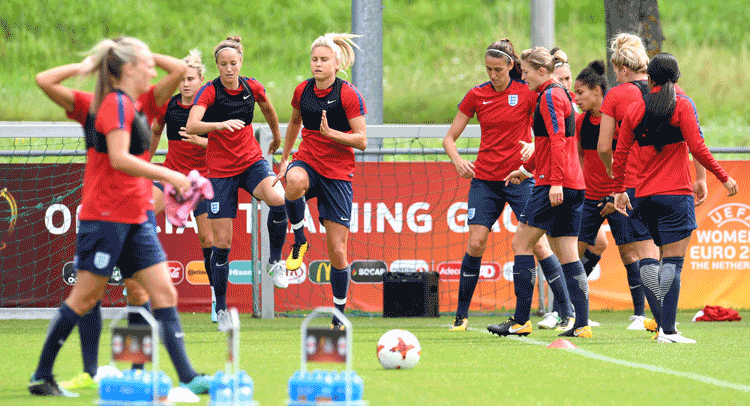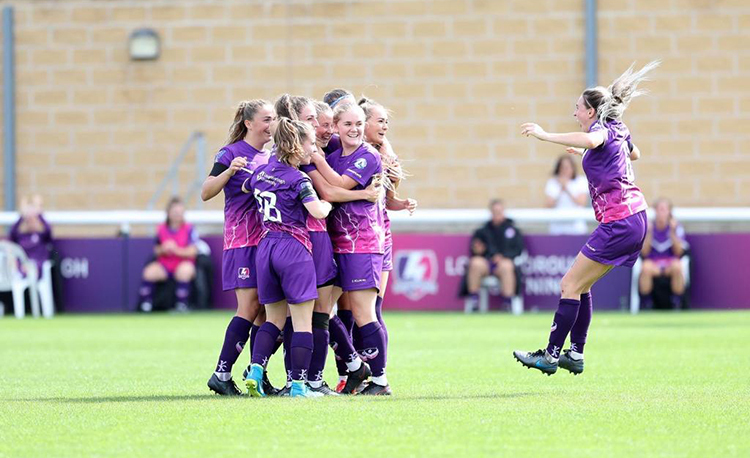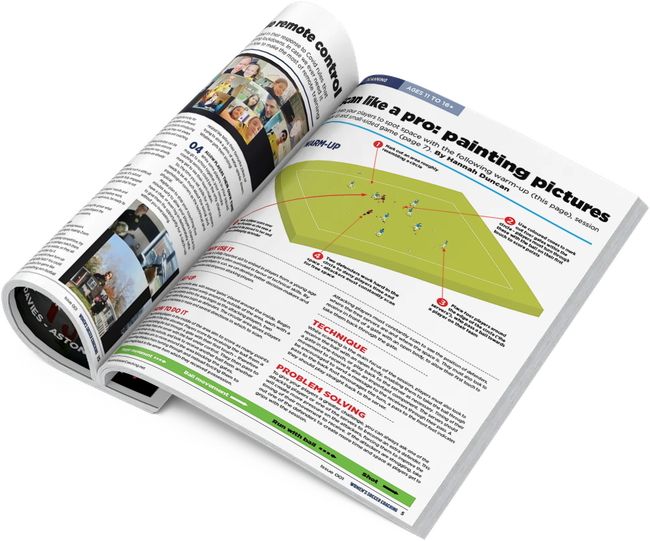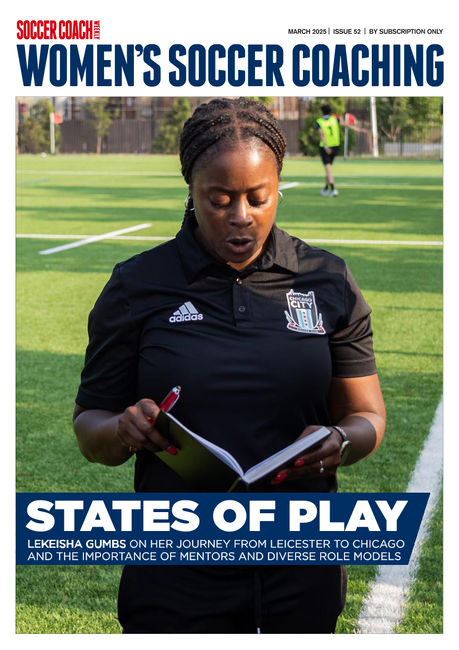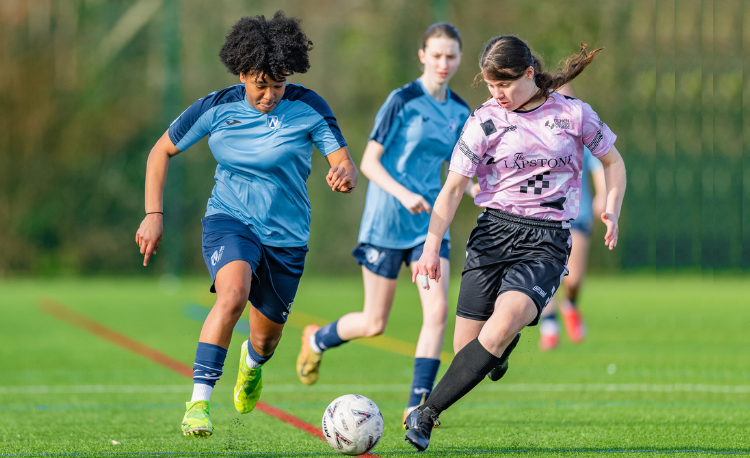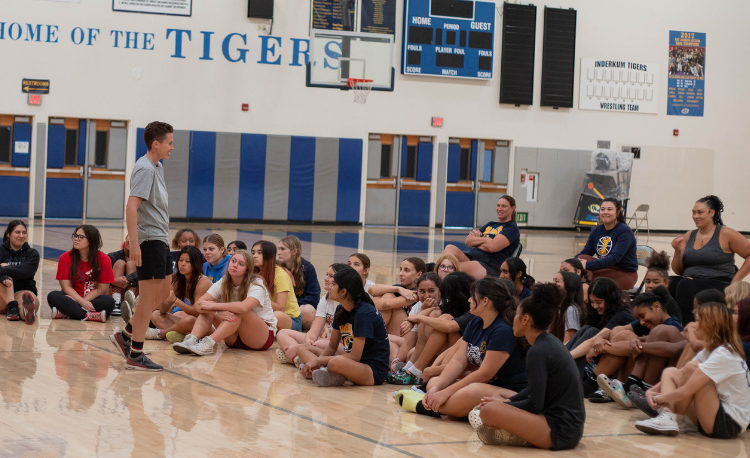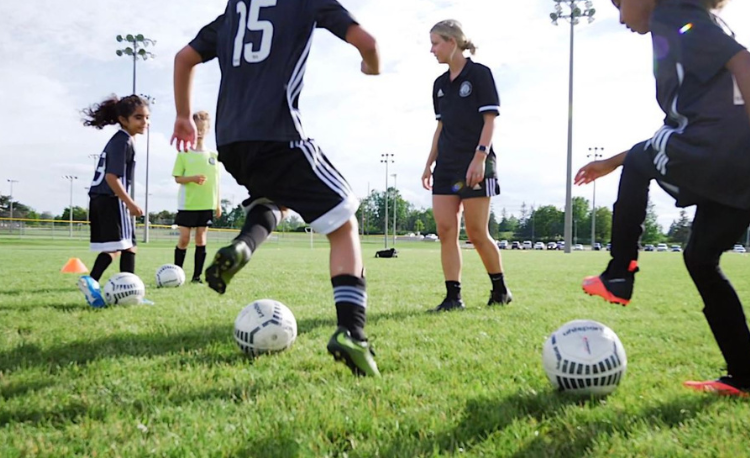You are viewing
1 of your 3 free articles
Tackling the gender taboo
Ex-USWNT high-performance coach Dawn Scott, now with England, tells Hannah Duncan how coaches can improve the menstrual health of their players
In March 2019, Dawn Scott - then the high- performance coach for the US women’s national team - stood before the hushed players of the Houston Dash.
She was beginning a series of talks to NWSL franchises about the menstrual cycle and its potential effects on performance.
The male members of the Dash’s staff went to take their leave. But Scott felt this was not a conversation just for female ears.
“Rachel [Daly, Houston Dash player] said to me ‘Do you want them to be in it?’,” Scott recalled.
“And I said, ‘Well yeah, because it’s not just a subject for females, everybody should be in it’. So she went and got them and to give them their due they sat through the session.
“For me, that was the first step of breaking down the male/female taboo.”
When Scott sat in on a similar talk a year later, given to the England Lionesses’ players by her friend Dr Georgie Bruinvels, it was again clear the whole room should be taking note, not just the players.
She said: “Phil [Neville, then England head coach] and all of the other male staff were in there.
“And actually some of the female staff were asking questions at the end because we talk about players being recovered and prepared and not having the symptoms, but actually it’s the same for every female on the support staff as well.”
The fact these conversations happened very recently shows the pace of change in the sport.
And yet, given the resources ploughed into exploiting marginal gains, it is surprising that periods - which can be detrimental to performance - have been overlooked for so long.
Part of Scott’s briefs recently have been to change that. First, with US Soccer - who she was employed by for just shy of a decade - and now with her native England, working as their physical performance manager since December 2019.
Scott says her passion is education around the topic, not just with coaches - particularly male ones - but players themselves.
She said: “I think it’s important girls and women in football know there are things they can do to reduce some of the symptoms they might experience, and it’s not something they need to keep quiet about and get on with.”
While she acknowledges some clubs and national federations will be better placed to do this than others, Scott said she had spotted a welcome trend in terms of willingness to integrate female wellness.
“There’s this thirst to know more about female health and find out what they can do in their environment,” she said.
“Every environment is different. It comes down to what staff, resources and expertise you have because some elements of female health should be driven by medical staff. Some of it is the performance psychology, in terms of relaxation and anxiety.
“But I think there is this willingness to want to learn and to integrate that female health support around the players.”
But for a conversation to spread, and for taboos to be cast into history, willingness is just the start - next comes communication.
Scott added: “You need to create an environment where players are willing to talk about it and make sure the male staff - whether it’s coaches, sports scientists or medical staff - feel okay talking about it.
“Equally, they need to create an environment where a player is able speak to a male member of staff.
“Then it’s about trying to understand each player, because every individual is different in terms of the number and severity of symptoms they experience at each stage in their cycle. The key is coming up with an individual plan that might help each player.
“When you start scratching below what some of those plans or strategies might be, some of it is actually just good habits of elite athletes, whether it’s diet, recovery or sleep. Some of it has massive overlap into other elements of a player’s performance.
“It’s about trying to understand each player because every individual is different”
“It’s also the language – you would talk differently to a 14-year-old girl, who’s just gone through puberty, than you would a more senior player, who is more educated and aware of their body and how it feels.”
Discussion around the menstrual cycle and its debilitating effect on sportswomen was sparked in 2015, when British tennis player Heather Watson declared after defeat at the Australian Open: “I think it’s just one of these things that I have, girl things.”
Amid the reaction, tennis commentator Annabel Croft, a former top 30 player in the 1980s, said in her day symptoms were “all hushed up”.
She said: “I remember being on court feeling dizzy, disorientated and tearful, then coming off court, going into the locker room and finding my period had started – and realising that’s why I was all over the place.”
She also admitted to being “terrified of leaking” while wearing white skirts - and Scott believes footballers have similar concerns.
“Wearing white shorts, if you know you’re a heavy bleeder, can cause quite high anxiety for female players,” she said. “Breast tenderness is a common symptom, too, so we make sure bras support in the correct places.
“We’ve started to work with Nike and those companies to see how we can ensure we’re not going to have a player anxious when they’ve started their period, if it’s a really important game for club or country.”
Scott says the players she has worked with typically experience increased symptoms four to five days before the onset of their bleed phase, reducing one or two days into it.
She advises that coaches and medical staff focus on plans for mitigating symptoms before the last resort of altering training regimes for players feeling the strain.
“It’s highlighting when players experience symptoms, what those symptoms are and actually looking at how you can reduce the severity of those symptoms so that recovery isn’t impacted and ultimately performance isn’t impacted,” she said.
“So for me, it’s not necessarily about changing the training, it’s actually reducing and minimising the symptoms so that performance isn’t compromised.
“It’s no different to a player suddenly reporting a high level of fatigue or that they haven’t slept well. If there are symptoms that are linked to female health or the menstrual cycle, we might look at tweaking the session, but exercise can actually help some of the symptoms.
“If you can be proactive and reduce those symptoms, you might not have to factor in the menstrual cycle. It’s very much about knowing your players.
Related Files
“The other element is the visual/verbal wellness check. If a player is usually bubbly and bright every single day, and there’s suddenly a change in mood or you can see they’re fatigued, that’s probably just as much of a signal that you might need to adapt their training.
“It’s using your whole multidisciplinary team around the players, them knowing exactly what is needed, and then communicating that to the technical staff in terms of what might need to be adapted.”
For those clubs not blessed with such resources to monitor players or assign them individual plans, Scott says there are a couple of simple wins to meet player needs.
“One is a paper and pencil menstrual diary players can keep, so at least you start getting a pattern and can track what phase players might be in,” she said.
“There are also a multitude of apps out there that players can use – FitrWoman is one which I think is very informative and educational, gives some really good advice around diet and nutrition.
“And then I think you can just have simple management strategies that address recovery, diet and sleep. Because a top tip for diet or sleep is the same, whether it’s related to your menstrual cycle or not. So I think it’s just education and good habits.”
Scott was with the USWNT from 2010 to 2019, and was a visible and popular member of the backroom staff given her close working relationship with the players. During her spell in the States, they won two World Cups and an Olympic gold medal.
“Every day your hormones are fluctuating, changing and interacting...”
But the Washington native - that’s Washington in north-east England, rather than Washington DC - returned home in 2019 to rejoin the FA, where she had worked previously as head of sports science.
Her task is to lead the strategy to get the England squad in peak shape, inside and out, ahead of their hosting of Euro 2022.
“We’ve had regular touch points with players around their strategy plans that they’ve implemented,” she said.
“Some of them have had massive behaviour change in some of their lifestyle, in terms of what they’re doing, and it’s kind of impacted other areas of their performance.
“So for some, changing their diet has led to body composition changes which has led to increase in physical profiles which has led to increases in performance in their matches. So it’s that knock on effect.
“For me, the menstrual cycle is all part of it and needs to become a subject you just talk about, like a warm up or a strength session.

“It’s your menstrual cycle – every single day, your hormones are fluctuating and changing and interacting. And I think we need to be comfortable talking about it because it is something that as females, we do experience every single day.”
Newsletter Sign Up
Newsletter Sign Up
Discover the simple way to become a more effective, more successful soccer coach
In a recent survey 89% of subscribers said Women's Soccer Coaching makes them more confident, 91% said Women's Soccer Coaching makes them a more effective coach and 93% said Women's Soccer Coaching makes them more inspired.
*includes 3 coaching manuals
Get Inspired
All the latest techniques and approaches
Women's Soccer Coaching offers proven and easy to use soccer drills, coaching sessions, practice plans, small-sided games, warm-ups, training tips and advice.
We've been at the cutting edge of soccer coaching since we launched Soccer Coach Weekly in 2007, creating resources for the grassroots youth coach, following best practice from around the world and insights from the professional game.

